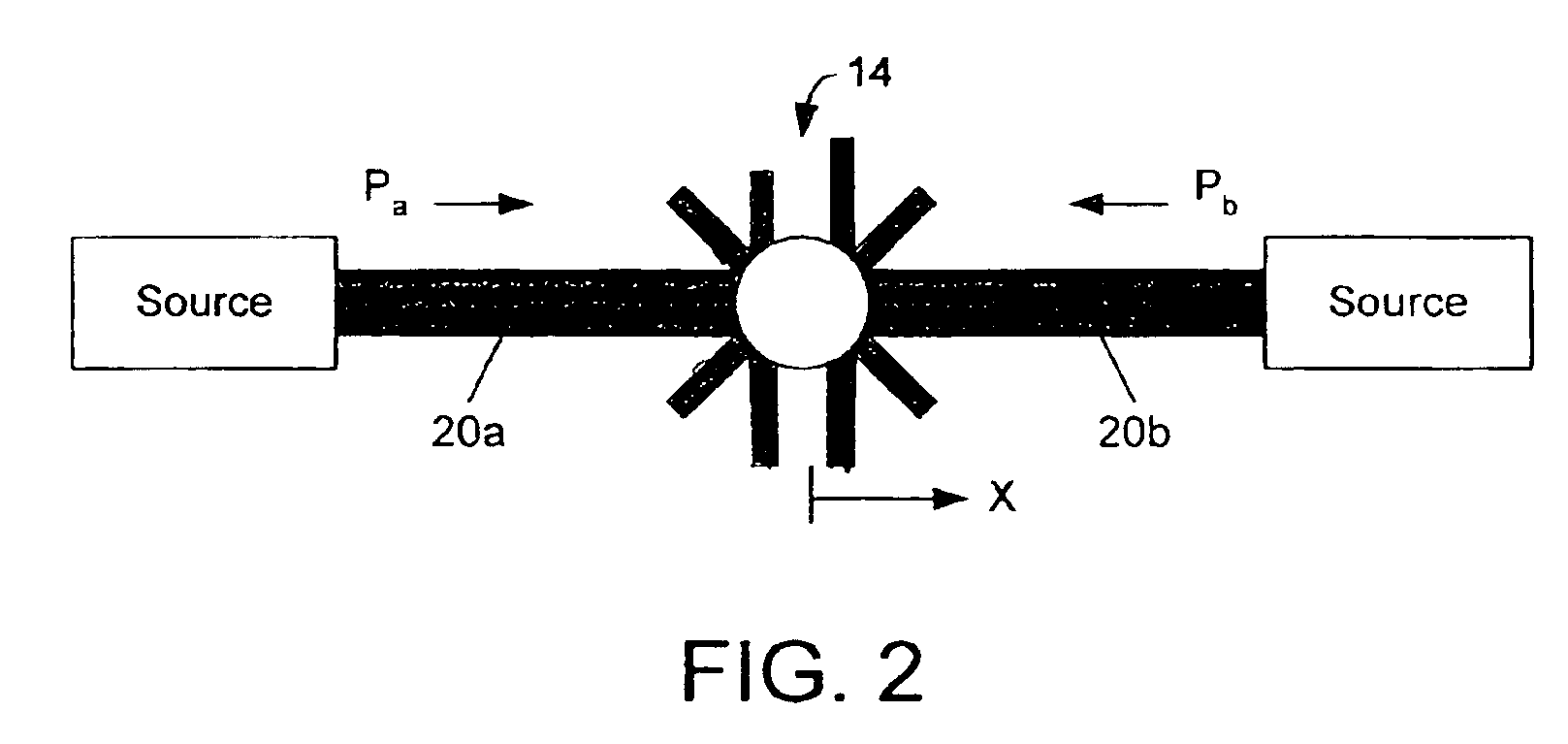Optically rebalanced accelerometer
a technology of accelerometer and optical rebalance, applied in the field of accelerometers, can solve the problems of insufficient manufacturing base of electromechanical instruments, relatively large and expensive electromagnetic components, and inability to meet the needs of measurement, and achieve the effects of low power, low weight, and improved accuracy
- Summary
- Abstract
- Description
- Claims
- Application Information
AI Technical Summary
Benefits of technology
Problems solved by technology
Method used
Image
Examples
Embodiment Construction
The present invention relates to an all-optical, rebalanced accelerometer that uses radiation pressure to stabilize a proof mass. In overview, an optical accelerometer according to the present invention uses one or more pairs of mutually orthogonal optical beams from an optical source, in order to stabilize a proof mass, using radiation pressure from the optical beams. In response to an inertial force acting on the proof mass, the proof mass moves from its equilibrium position. The power for the optical sources is adjusted under closed-loop control, so as to restore the proof mass to its initial position. The power change required to restore the position of the proof mass to its equilibrium position is proportional to the acceleration of the proof mass.
FIGS. 1(a)-1(c) illustrate the physical principles behind an optical accelerometer 10, constructed according to the present invention. In the present invention, the optical accelerometer uses radiation pressure from an optical beam in...
PUM
 Login to View More
Login to View More Abstract
Description
Claims
Application Information
 Login to View More
Login to View More - R&D
- Intellectual Property
- Life Sciences
- Materials
- Tech Scout
- Unparalleled Data Quality
- Higher Quality Content
- 60% Fewer Hallucinations
Browse by: Latest US Patents, China's latest patents, Technical Efficacy Thesaurus, Application Domain, Technology Topic, Popular Technical Reports.
© 2025 PatSnap. All rights reserved.Legal|Privacy policy|Modern Slavery Act Transparency Statement|Sitemap|About US| Contact US: help@patsnap.com



